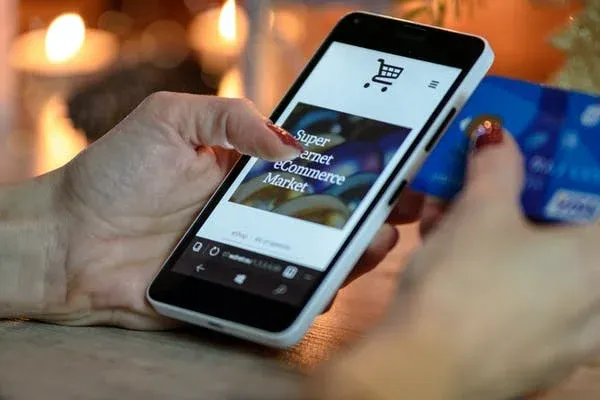The future of e-commerce
E-commerce has come a long way since the first online transaction was made in 1994, and the future looks even brighter. Here are a few key trends that are likely to shape the future of e-commerce:
Increased adoption of mobile commerce
With the increasing dominance of smartphones and tablets, it's likely that more and more shopping will be done on mobile devices. Retailers will need to optimize their websites and apps for mobile users, and we may see the emergence of new payment technologies such as mobile wallets and biometric authentication.
Personalization and customization
As data collection and analysis become more sophisticated, retailers will be able to offer increasingly personalized and customized shopping experiences. Customers will be able to create their own products, such as custom-made shoes or personalized jewelry, and retailers will be able to offer tailored recommendations based on a customer's past purchases and browsing history.
Growth of social commerce
Social media platforms will increasingly become a place for shopping, with more retailers using them to sell directly to customers. We'll see the emergence of new features, such as the ability to make purchases directly within a social media app, and an increase in the use of influencer marketing.
Increased use of artificial intelligence
AI will play a bigger role in e-commerce, with chatbots and voice assistants being used to answer customer questions, make recommendations, and even handle purchases. Retailers will also use AI to analyze customer data and predict demand, allowing them to better manage their inventory and operations.
Virtual and augmented reality
With the proliferation of high-quality virtual and augmented reality technology, it's likely that we'll see more and more retailers using these tools to create immersive shopping experiences. Customers will be able to virtually try on clothes, see what furniture will look like in their homes, and even explore virtual storefronts.

As e-commerce continues to grow and evolve, we can expect to see a number of other trends emerge as well. Here are a few more predictions for the future of online shopping:
Growth of subscription-based models
Many retailers are already experimenting with subscription-based models, where customers pay a regular fee in exchange for regular deliveries of products or services. This trend is likely to continue, with more retailers offering subscription options for a variety of products and services.
Greater use of virtual assistants
Virtual assistants, such as Amazon's Alexa and Google Assistant, are becoming increasingly common in households around the world. As their capabilities improve, it's likely that we'll see more and more people using these assistants to make online purchases and manage their shopping lists.
More widespread adoption of blockchain
Blockchain technology, which is best known for its use in cryptocurrency, has the potential to revolutionize e-commerce in a number of ways. It could be used to improve supply chain management, enhance security and reduce fraud, and even enable new forms of micropayments.
Emergence of new payment technologies
In addition to the growth of mobile payment options, we may see the emergence of new payment technologies such as facial recognition and fingerprint scanning. These technologies could make it easier and more secure for consumers to make online purchases.
Increased focus on sustainability
As consumers become more environmentally conscious, it's likely that we'll see a greater focus on sustainability in e-commerce. Retailers may offer more eco-friendly products, and we may see the emergence of new initiatives to reduce the environmental impact of online shopping, such as carbon-neutral shipping.
It's worth noting that the future of e-commerce will also be shaped by a number of broader trends, such as the growth of the gig economy and the increasing importance of data privacy. Here are a few similar trends to consider:
Rise of on-demand delivery
With the growth of the gig economy, it's likely that we'll see more and more retailers offering on-demand delivery options. This could include the use of gig workers to deliver products to customers' doorsteps, as well as the use of autonomous vehicles and drones for delivery.
Increased use of video
Video is an increasingly popular medium for online shopping, with many retailers using video to showcase their products and promote sales. It's likely that we'll see even more retailers turning to video in the future, whether it's through the use of live streaming or pre-recorded videos.
Greater focus on data privacy
As consumers become more aware of the value of their personal data, it's likely that we'll see a greater focus on data privacy in e-commerce. Retailers will need to be transparent about how they collect and use customer data, and may need to implement additional security measures to protect it.
Emergence of new business models
As the e-commerce landscape evolves, it's likely that we'll see the emergence of new business models. For example, we may see more retailers offering rental or subscription options for products, or the rise of peer-to-peer marketplaces where individuals can sell their own products directly to other consumers.

As e-commerce continues to grow and evolve, it's important to consider the potential impact on traditional brick-and-mortar retailers. While some physical stores may struggle to compete with online retailers, others may find ways to adapt and thrive in the digital age. Here are a few similar trends to consider:
The rise of omnichannel retail
Omnichannel retail is a strategy that combines online and offline shopping experiences, allowing customers to shop seamlessly across multiple channels. Many traditional retailers are already embracing omnichannel approaches, and it's likely that we'll see more of this in the future.
The importance of the in-store experience
Even as online shopping grows in popularity, it's important to remember that many people still value the in-store shopping experience. Physical stores can offer a sense of community, personal interaction, and the ability to see and touch products before purchasing. As a result, some retailers may focus on creating unique and immersive in-store experiences to draw customers in.
The growth of click-and-collect
Click-and-collect, also known as buy online, pick up in-store (BOPIS), is a popular option that allows customers to shop online and pick up their purchases at a physical store. This can be a convenient option for customers and can also drive foot traffic to physical stores. It's likely that we'll see more retailers offering click-and-collect options in the future.
The rise of pop-up stores
Pop-up stores, which are temporary retail spaces that appear for a limited time, are becoming an increasingly popular way for retailers to reach customers. Pop-up stores can be a great way for retailers to test out new locations or products, and can also provide a unique shopping experience for customers.
As the e-commerce landscape continues to evolve, it's important to consider the potential impact on small businesses and entrepreneurs. Here are a few similar trends to consider:
The rise of e-commerce platforms
E-commerce platforms, such as Amazon, eBay, and Shopify, make it easier for small businesses and entrepreneurs to sell their products online. These platforms provide a range of tools and services, such as payment processing, shipping, and customer service, that can help small businesses succeed in the online marketplace.
The importance of digital marketing
In the digital age, it's important for small businesses and entrepreneurs to have a strong online presence. Digital marketing strategies, such as search engine optimization, social media marketing, and email marketing, can help small businesses reach their target audience and drive sales.
The rise of influencer marketing
Influencer marketing, where influencers promote products to their followers on social media, can be a powerful way for small businesses to reach new customers. By partnering with the right influencers, small businesses and entrepreneurs can tap into a large and engaged audience.
The growth of dropshipping
Dropshipping is a business model where a retailer doesn't keep products in stock, but instead transfers customer orders and shipment details to a third-party supplier, who then ships the product directly to the customer. This can be a cost-effective way for small businesses and entrepreneurs to enter the e-commerce market, as it allows them to offer a wide range of products without the need for inventory or fulfillment.

Overall, the future of e-commerce presents a range of opportunities for small businesses and entrepreneurs. By leveraging the right tools and strategies, these businesses can succeed in the online marketplace and reach a global audience. From the adoption of new technologies to the emergence of new business models, there are many factors that will shape the way we shop online in the coming years.
The future of e-commerce is likely to be a mix of online and offline shopping experiences. While online retail will continue to grow and evolve, it's important to remember that traditional retailers have the opportunity to adapt and thrive in the digital age as well.
Scale your technical team with Talrn
Talrn is an exclusive staff augmentation company for developers, carrying vast experience in crafting digital success stories for companies.
Hire immediately available developers & onboard them instantly, at zero effective cost. Contact hello@talrn.com for more information.

